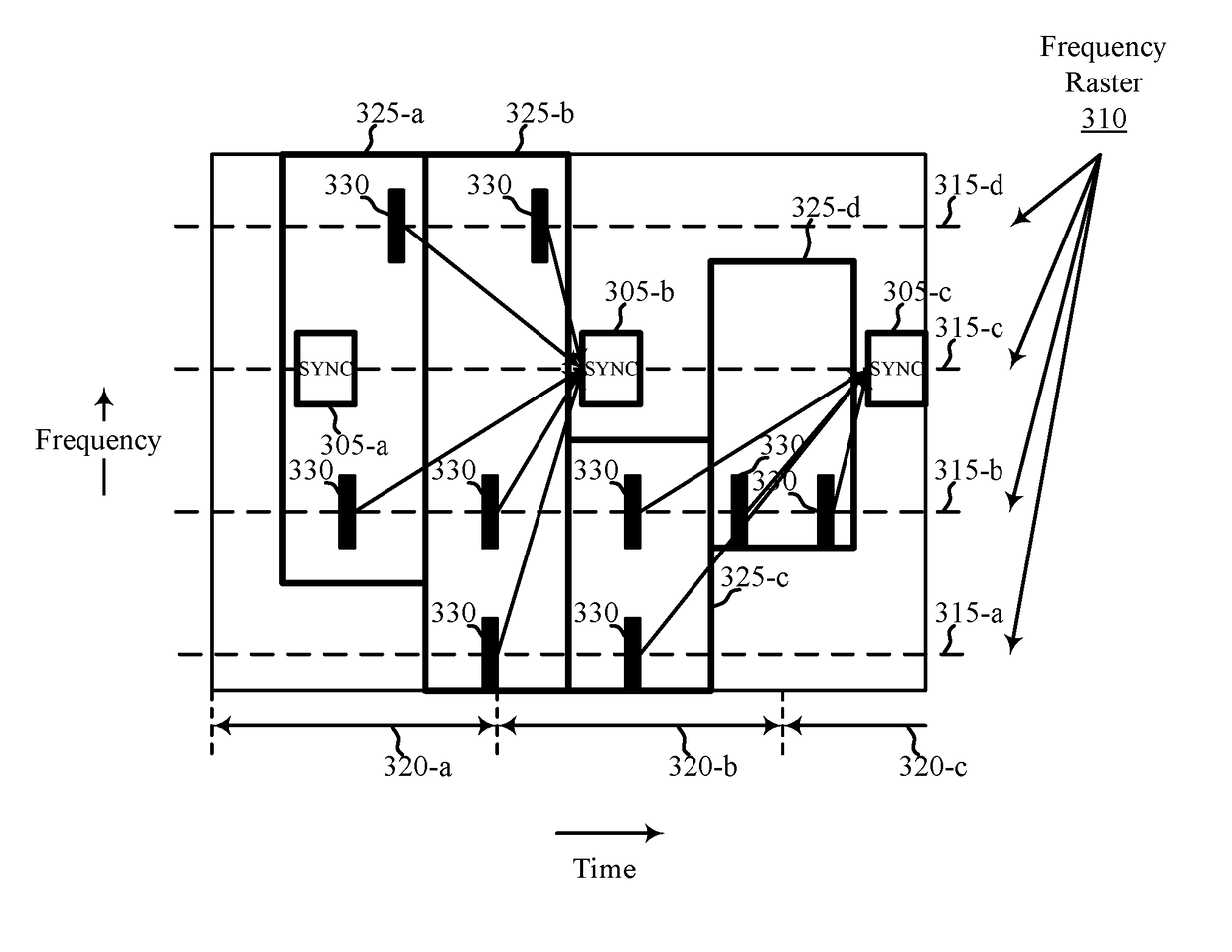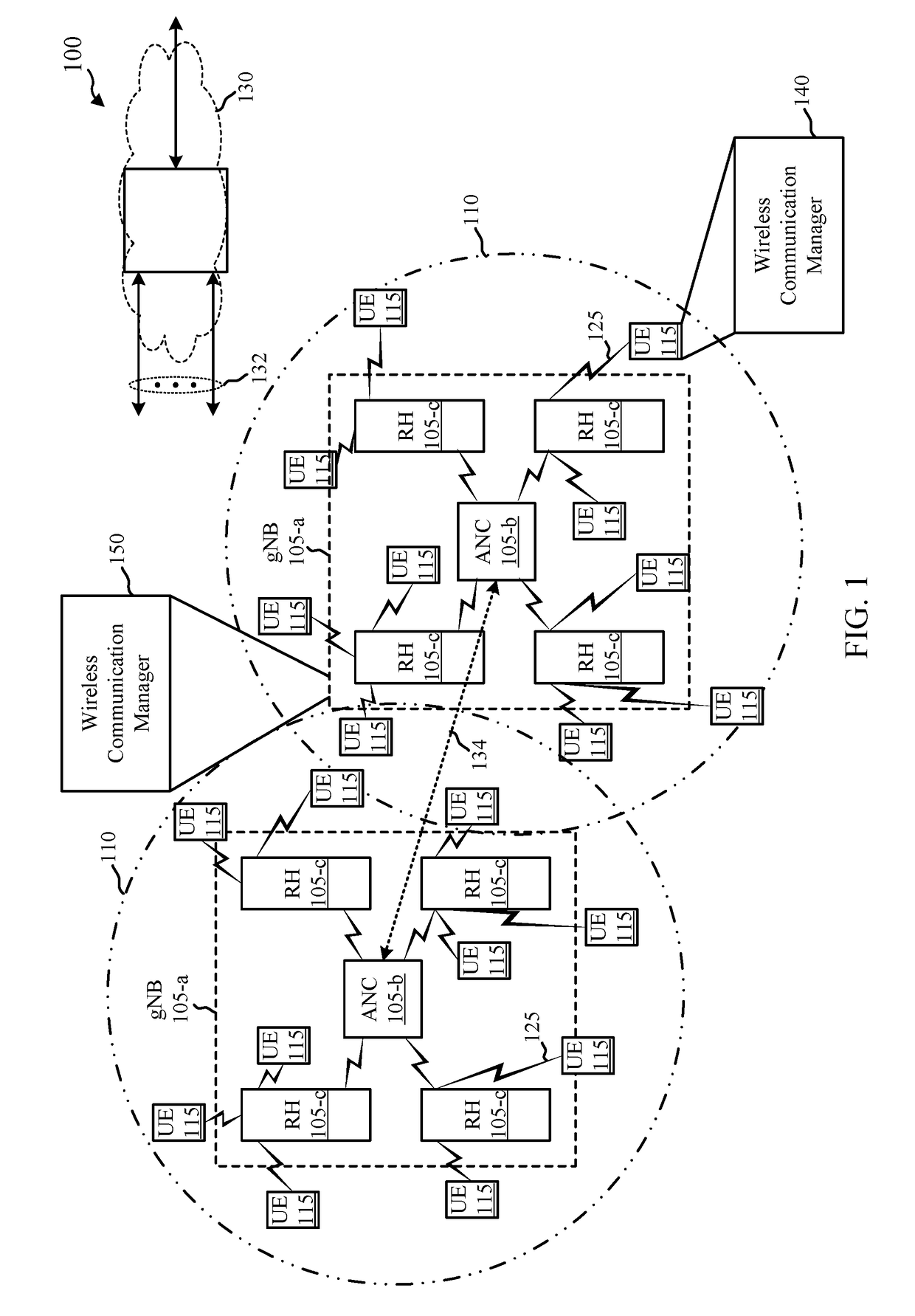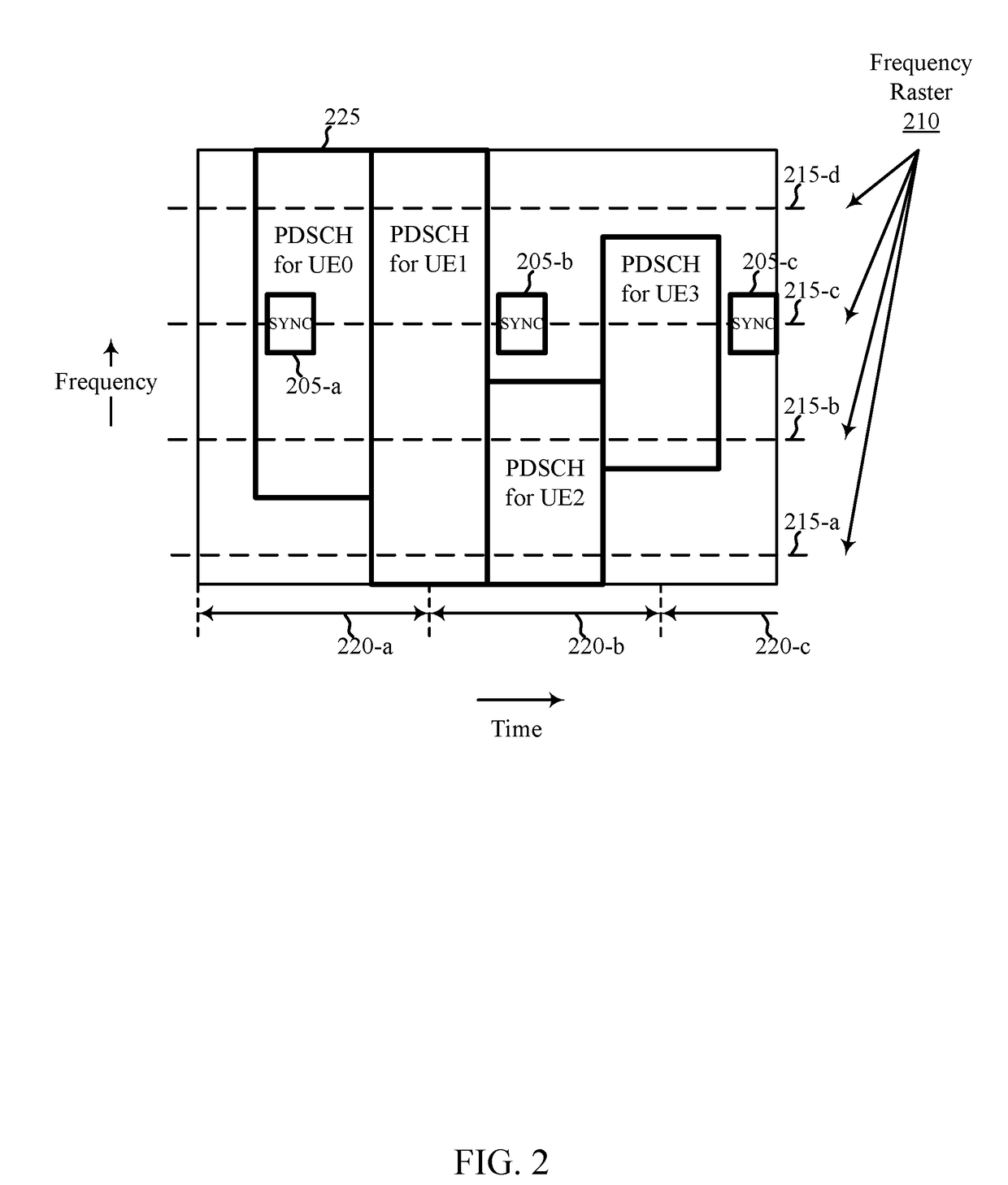Techniques for transmitting or using a pull-in signal to locate a synchronization channel
a technology of synchronization channel and pull-in signal, which is applied in the field of wireless communication systems, can solve the problems blindly searching for a synchronization channel takes time, and achieves the effect of increasing the initial acquisition time (or average initial acquisition time), reducing the search time of the synchronization channel, and increasing the initial acquisition tim
- Summary
- Abstract
- Description
- Claims
- Application Information
AI Technical Summary
Benefits of technology
Problems solved by technology
Method used
Image
Examples
Embodiment Construction
[0047]The present disclosure describes techniques for transmitting or using a pull-in signal to locate a synchronization channel. In a legacy LTE network, a synchronization channel is transmitted every 5 milliseconds (ms). A UE may search for the synchronization channel to collect information needed to access the LTE network. In a LTE unlicensed (LTE-U) network, a synchronization channel may be transmitted every 40 ms. The transmission period of the synchronization channel is longer to be coexistence friendly with Wi-Fi networks. As a result, the initial acquisition time can be longer for a UE that performs an initial access procedure for a LTE-U network (e.g., the UE needs to monitor a raster point longer to test all timing hypotheses for synchronization channel transmission). To potentially decrease a UE's initial acquisition time, a network access device may transmit instances of a synchronization channel within data bursts for which the network access device has already gained a...
PUM
 Login to View More
Login to View More Abstract
Description
Claims
Application Information
 Login to View More
Login to View More - R&D
- Intellectual Property
- Life Sciences
- Materials
- Tech Scout
- Unparalleled Data Quality
- Higher Quality Content
- 60% Fewer Hallucinations
Browse by: Latest US Patents, China's latest patents, Technical Efficacy Thesaurus, Application Domain, Technology Topic, Popular Technical Reports.
© 2025 PatSnap. All rights reserved.Legal|Privacy policy|Modern Slavery Act Transparency Statement|Sitemap|About US| Contact US: help@patsnap.com



